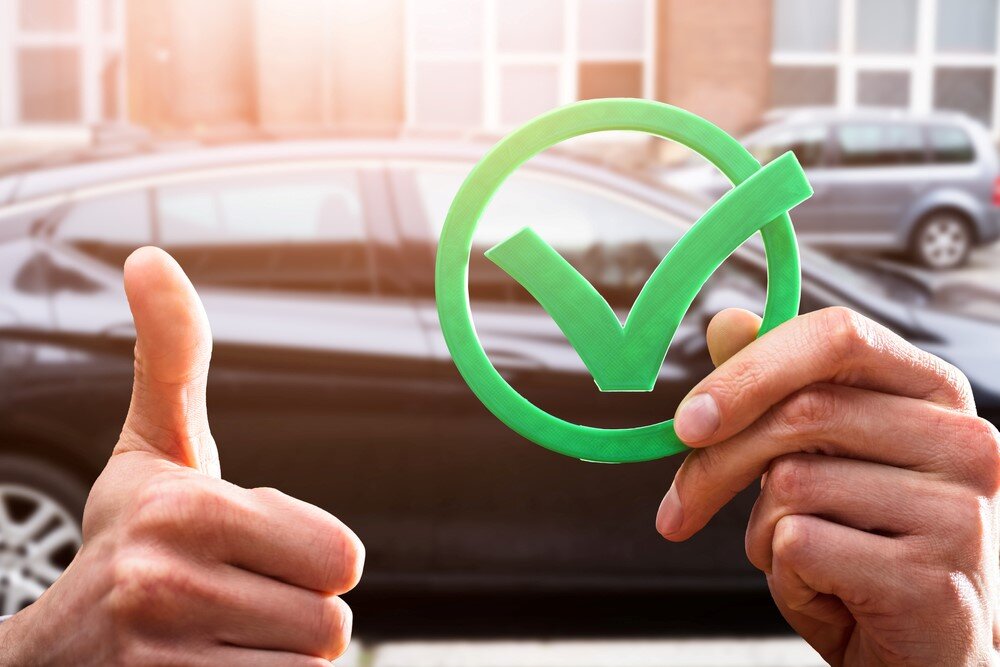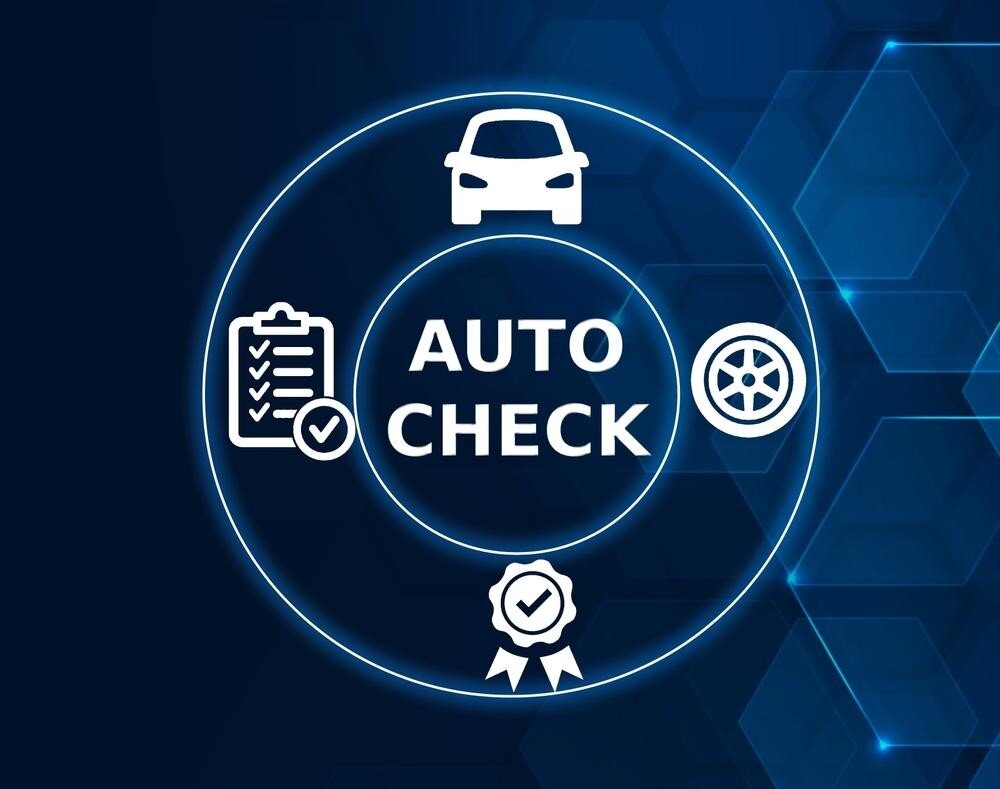The Ultimate Checklist for Buying a Used Car

Buying a used car can be a smart financial move, but only if you slow down and follow a plan. A solid checklist for buying a used car keeps you from missing hidden costs, sketchy titles, or mechanical landmines. Use this guide as your own buy used car checklist, no matter who you’re buying from.
The steps below walk you through a full what to look for when buying a used car checklist — covering budget, research, history, inspection, and a real test drive.
1. Set a Realistic Budget
Every good checklist when buying a used car starts with numbers that include more than the sticker price. List out:
- • Purchase price, sales tax, title and DMV fees, registration
- • Insurance premiums for the exact model you’re considering
- • Fuel costs (MPG matters more than you think when gas spikes)
- • Routine maintenance, tires, brakes, and the “what if it breaks?” fund
Decide how you’ll pay. Cash is simple, but many buyers finance. If you finance, look at total cost over the life of the loan, not just a monthly number a salesperson tossed out.
If you are brand new to credit or still building it, read up on first time auto loans before you sign anything. Add these financing realities to your buying a used car checklist so you do not fall for a payment that feels fine today but strangles you six months in.
You’ll need proof of insurance, ID, possibly proof of income, and whatever the DMV in your state asks for. Gather it now so the deal does not stall later.
2. Research Reliable Models
A strong used car checklist for buying actually starts before you ever step onto a lot. Pick cars that have a reputation for lasting, not just looking good in photos.
- • Scan long-term reliability data and recall histories
- • Read owner forums for real-world problems and fixes
- • Check parts availability and price — cheap parts save you later
- • Look at resale value trends so you are not upside down next year
- • Prioritize safety scores and crash-test ratings
If a model is infamous for bad transmissions or electrical gremlins, cross it off your buying used car checklist. Spend a few minutes with background info on brands via resources about used car manufacturers. Some makers quietly build tanks that run forever; others build money pits. Knowing the difference early will save you cash and stress.
3. Check Vehicle History Reports
Your buy used car checklist should always include pulling a vehicle history report. No exceptions.
- • Use the VIN to pull a Carfax, AutoCheck, or NMVTIS record
- • Look for accident damage, flood exposure, lemon buybacks, salvage or rebuilt titles
- • Watch for odometer rollbacks or cars that ping-pong between owners quickly
- • Compare mileage and service entries with what the seller tells you
If something does not match, hit pause. A salvage title might be fine for a project car, but it is usually not what most shoppers want when following a clean checklist for buying a used car from dealer or private party.
History reports also help when you go to insure or register the car later, so keep them with your documents. This paperwork step belongs on every buying a used car checklist you build.

4. Inspect the Vehicle’s Condition
Photos and ad copy are sales tools, not proof. Your checklist needs a real inspection — by you and ideally by a mechanic.
Exterior
Look for panel gaps that are wider on one side, paint that does not quite match, bubbling (rust) around wheel arches, or overspray inside door jambs. Check tires for uneven wear; it can signal alignment or suspension problems. Make sure all four tires match in size and brand. Uneven tread or mismatched sets are a bargaining chip or a walk-away sign.
Interior
Smell for mold, mildew, or heavy air freshener trying to mask it. Test every button: windows, locks, seat adjustments, heater, A/C, radio, Bluetooth, hazard lights, and wipers. Check the seat belts for frays. A warning light that “just needs a sensor” is still a warning light.
Under the Hood
If you know cars, check fluids, hoses, belts, battery date, and any obvious leaks. If you do not, pay a trusted mechanic. A professional inspection is a cheap insurance policy and should sit high on any checklist. The cost of a pre-purchase inspection is nothing compared to a bad engine or hidden frame damage.
5. Take a Thorough Test Drive
This part separates “looks good” from “is good.” Your checklist should demand a proper route:
- • Drive on city streets and highways to see how it accelerates, shifts, and brakes
- • Listen for clunks over bumps, whining from the transmission, or squeals when turning
- • Check steering feel at different speeds; does it pull or wander?
- • Test every feature while moving: A/C under load, lights, cruise control, infotainment, wipers
- • After the drive, pop the hood again and look for fresh leaks or smells
Many people rush this step. Do not. A careful drive is one of the most valuable lines on any checklist when buying a used car. If the seller will not let you drive it long enough, that alone is a sign to walk.
Verify Title and Ownership
A clean title in the seller’s name is non-negotiable. Your checklist should include verifying the physical title, plus matching ID. The VIN on the dash, the door jamb sticker, and the title must all line up.
If they do not, stop. The paperwork should include a bill of sale with accurate mileage, the agreed price, and both signatures. In California, confirm the car has a valid smog certificate if one is required. Ask for maintenance receipts and any warranty documents so you can file them with the rest of your paperwork.
Watch for title brands: salvage, rebuilt, flood, lemon buyback. These are not automatic deal breakers, but they change value, insurance rates, and financing options. Be sure your ‘what to look for when buying a used car checklist’ includes 'title brand status'. It's easy to overlook when you're eager to close the deal.
Understand Financing and Registration
Even if you already penciled out a budget, double-check the numbers before you sign. Compare bank, credit union, and dealer offers. The lowest payment is not always the best deal if the term is long and the rate is high. Build “APR, total interest paid, and loan length” into your checklist so you read every line of the contract.
Registration and taxes hit right after the purchase. Your checklist when buying a used car should remind you to set aside money for DMV fees, title transfer, and insurance activation. If you are rolling negative equity from another loan, write that into your buying used car checklist so the real cost is crystal clear. Keep copies of every document for your records. That simple habit saves headaches if something needs correction.
Why Choose Karz Plus in San Diego
If you would rather skip the guesswork and still keep the savings of a pre-owned car, Karz Plus is worth a look. We stock a wide range of pre-inspected vehicles and help buyers who need flexible financing, including folks researching first time auto loans or loans for drivers with bad credit.
Our team publishes practical used car buying tips and background info on used car manufacturers, which makes it easier to build your own checklist before you step onto the lot.
Shopping local also matters. If you’re hunting for used cars in Escondido or San Diego, you can browse inventory and contact the store directly. Being able to test drive, inspect, and finalize paperwork in person makes your buy used car checklist easier to complete.
Final Walk-Through: Your Complete Buying a Used Car Checklist
Use this condensed list as a quick double check before you hand over money or sign a contract. It repeats the core items so each keyworded list you wanted is genuinely covered:
- Budget locked in: price, taxes, DMV, insurance, fuel, maintenance (core of any checklist for buying a used car)
- • Financing chosen: rate, term, total cost, first payment date
- • Model research done: reliability, safety scores, parts cost
- • History report pulled: accidents, title brands, odometer, service records
- • Full inspection completed: exterior, interior, under the hood, tires, electronics
- • Proper test drive: city and highway speeds, braking, steering, noises, features
- • Title and VIN verified: clean, transferable, VIN match, smog certificate if required
- • Paperwork organized: bill of sale, title, loan docs, warranty slips, insurance proof
- • Registration and taxes paid: DMV appointment or online submission scheduled
Follow this process and the “surprise” factor disappears. You’ll know the car’s history, real cost, and legal status before you commit. That’s the whole point of a true checklist for buying a used car — confidence from start to finish.
Need help lining everything up quickly? Lean on a dealership that’s set up to make each step painless. Karz Plus can walk you through the paperwork, financing, and vehicle selection so you can focus on choosing the right car, not wrestling with forms.
Dealership Info
Business Hours
| Mon: | 10-7 |
|---|---|
| Tue: | 10-7 |
| Wed: | 10-7 |
| Thu: | 10-7 |
| Fri: | 10-7 |
| Sat: | 10-7 |
| Sun: | CLOSED |
